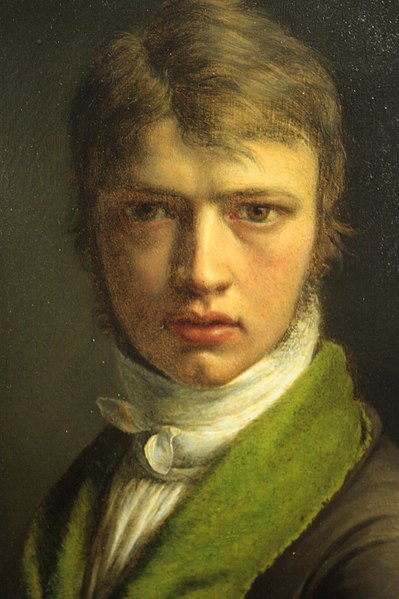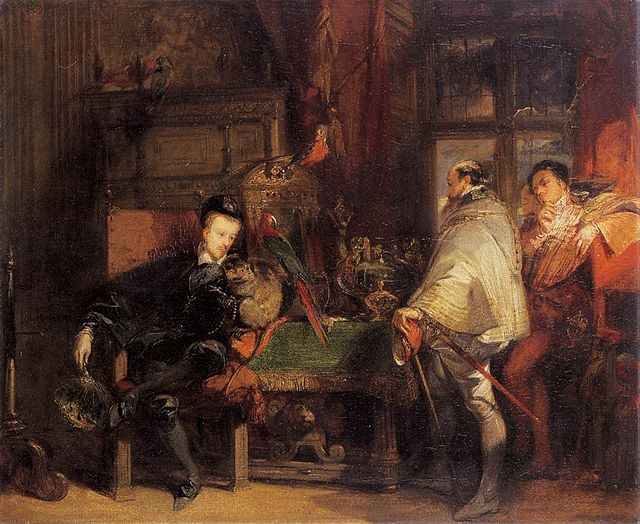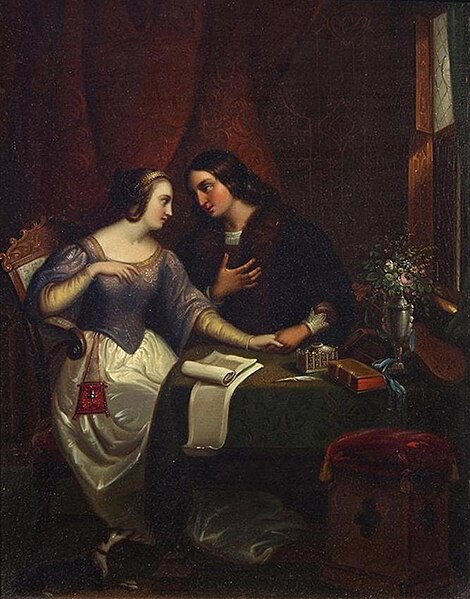Fleury François Richard, sometimes called Fleury-Richard, was a French painter of the Lyon School. A student of Jacques-Louis David, Fleury-Richard and his friend Pierre Révoil were precursors of the Troubadour style.
Fleury–Richard (self portrait in youth)
Portrait of Fleury François Richard by Jean-Marie Jacomin in 1852
Young Woman at a Fountain, Musée des Beaux-Arts de Lyon
Valentine of Milan weeping for the death of her husband Louis of Orléans (c. 1802) Hermitage Museum, Saint-Petersburg
Taking its name from medieval troubadours, the Troubadour Style is a rather derisive term, in English usually applied to French historical painting of the early 19th century with idealised depictions of the Middle Ages and the Renaissance. In French it also refers to the equivalent architectural styles. It can be seen as an aspect of Romanticism and a reaction against Neoclassicism, which was coming to an end at the end of the Consulate, and became particularly associated with Josephine Bonaparte and Caroline Ferdinande Louise, duchesse de Berry. In architecture the style was an exuberant French equivalent to the Gothic Revival of the Germanic and Anglophone countries. The style related to contemporary developments in French literature, and music, but the term is usually restricted to painting and architecture.

Pierre-Henri Révoil, René d'Anjou and Palamède de Forbin, c. 1827, a typically inconsequential anecdotal scene, in this case commissioned by a descendant of Forbin, whose features conveniently were recorded on a relief.
Richard Parkes Bonington, Henri III of France
Jean-Baptiste Goyet, Héloïse et Abailard, oil on copper, 1829.
Pharamond lifted on a shield by the Franks, by Pierre-Henri Révoil and Michel Philibert Genod, 1845








